Fascinating! A real Dutch hero indeed!
Edit: Typo’s don’t help with legibility.
MK’s History Lesson
Here featured are the latest articles on historically germane subjects pertaining to our common seafaring interests here at Buccaneer’s Reef…
THE DUTCH INVASION OF ENGLAND
23 February 2015
True historians know that there was more than just one invasion of England besides King William I the Conquerer’s invasion from Normandy and the subsequent Battle of Hastings in 1066 – The Norman Conquest. Most folks don’t know about the others however….
On 05 November 1688, the Dutch Stadholder Prince William of Orange-Nassau invaded England.
Landing at Torbay, the English were shocked by the massive size of Williams fleet and the thousands of troops streaming up to the shores in countless boats there. William had assembled a fleet of 463 ships and an Army of 40,000 men (most of whom were hardened Dutch, Danish and German veteran professionals who had learned their trade fighting the French). This force was over double the size of the Spanish Armada and Parma’s Army that attempted invading a century before.
The Dutch met a token English resistance force initially but found their way mostly unhindered on their march to London. Several small bloody battles and skirmishes did occur against King James’ troops throughout the rest of the month and into December. Even after London was occupied and most of its inhabitants had fled – including the King and court, two more small battles occurred on the 5th and 9th of December, before peace was achieved.
With James now successfully deposed and many of the English nobles (against Catholic James from the beginning) endorsing the invading Protestant Dutchman’s bid for kingship. Dutch King William III whose mother was King Charles I’s eldest daughter, was crowned King of England with Mary Stuart (the daughter of King James) as his Queen.
James did mount a resistance and raised an Army of primarily Irish peasants, to attempt to take back his throne. James and the Stuart (Jacobite) cause were finally utterly crushed by the primarily professional Dutch and Danish troops near Drogheada, Ireland at the Battle of the Boyne in 1690. Battle of the Boyne
This historic event has often been called “The Glorious Revolution” of 1688. Glorious Revolution Many English historians labeled it “The Bloodless Revolution”, but that is obviously a known myth that has survived because of the event’s original preceding and subsequent propaganda.
Some would even say this is one of the first true historical examples of the skillful manipulation of public opinion and psy-ops. Indeed, some powerful English lords did approach William with the idea of invasion as early as February, but the Stadholder had no ambitions to be the King of England. His reason for invading England and accepting Kingship was to simply bring Britain into the strong alliance he had formed against his powerful enemy the “Sun King” Louis XIV and the French.
Interestingly James was warned numerous times of the Dutch preparations to invade by both Papal spies and French envoys as early as September, but payed them no mind and simply thought they were exaggerating. Some amazing political maneuvering was at work on the continent and Louis the XIV was busy helping the Emperor in his fight against the Turks on Germany’s eastern frontier. In fact the Emperor had just retaken Belgrade in a bloody battle and siege. Meanwhile King Louis plotted to invade the weak west German states at the same time while the Emperor was occupied in the east.
William in a brilliant stroke of strategic statecraft and diplomacy signed treaties with many of the German Elector Princes and brought their combined armies into Holland to guard both their own and the Dutch borders against the French while he used the vast majority of his troops to invade England.
William and his advisers were clearly worried by possible English resistance and knew if the country was so inclined it could quickly raise a formidable force that outnumbered the Dutch. Because of this a large amount of polemics and flyers were written in English and distributed before the invasion praising William as being the Champion of the Protestant cause bravely opposing the warmongering French king and power hungry Papacy. Even after the country had been subdued these polemics continued to be circulated to pacify the population that deposing a bad Catholic English King in favor a a righteous Protestant Dutch one was the best way forward for the country. William himself completed the ruse by quartering his own personal standards and the Dutch Army’s colors with the English flag in the upper right corner.
The reign and Era of William and Mary had began and didn’t end until 1694 when Queen Mary died. King William ruled on until his death in 1702. His reign had some particularly interesting consequences for England. Many have attributed Charles II and the “Restoration” with finally bringing Britain into Empire and while that’s true in many ways, England was extremely disorganized and fiscally a disaster. Britain suffered economically year after year largely because of out of control and unregulated free capitalist policies. William brought with him fiscal organization and Dutch economists.
Taxation and revenues, the stock market, venture capital, and the insurance industry saw their rise and began thriving under William’s administration with smart centralized managed fiscal policy and regulation while still allowing a free market system.
In addition, the subsequent Declaration and Bill of Rights allowed for numerous additional freedoms for the English people and forever abolished the church from dominating their future.
William had achieved what he had set out to and the French were put in check. However with a future where the destinies of Holland and England were closely tied in alliance – and England’s prosperity and growth the result – the Dutch Republic’s decline was imminent from there after.
William also marked another precedence in that to this day, England’s royals (with the exception of Queen Anne) have always been foreigners. In another small propaganda trick, the current house of Windsor is in reality the German House of Saxe-Coburg and Gotha from the House of Wettin. The name was changed in WWI by King George V due to anti-German sentiment. But that is another story….
For further reading on this subject I highly recommend “The Glorious Revolution: 1688 – Britain’s Fight for Liberty” by Edward Vallance. ISBN 976-1-60598-034-8
It’s available at Amazon.com. It’s an excellent read and cuts through the Anglo-centric haze of propaganda that has minimized this historic event for 300 years.
UPDATE and EPILOGUE
I have been in some interesting debates about this subject on other historical forums. So many anglophiles have a hard time digesting the historical truth of these events.
I thought I would share my comments in order to end the debate:
DUTCH INVASION AND CONQUEST OF ENGLAND IN 1688
“Invitation” is a moot point. From a very quick examination of the background of these events, one will discover in the first five minutes of research, that William meant to invade regardless of parliamentary support. The invitation of the “Immortal Seven” was a formality to allow legitimacy. (Hardly an invitation of the entire parliament of over 400 members)
However, William had carefully and skillfully already written out his manifesto called “THE DECLARATION” detailing to his own people, the English people, and it was even written in French and German as well, JUSTIFYING HIS CLAIMS for invading England and taking the English throne.
After William had occupied London, he called for the House of Lords and for the survivors of the last House of Commons of 1681 under Charles II – he did not call the Commons from James’ “Loyal parliament” because many were loyal to James – some were believed to be Catholic and many of them had already fled. An “invitation” to take the throne was the first order of business once Parliament had been assembled in a city already completely occupied by Dutch military forces.
This second invitation was also a formality for legitimacy – because William was already there and had already effectively and successfully conquered the country.
The Invasion was not bloodless nor did it freely enter the country without any opposition. James knowing that the Dutch were on their way and very aware of Dutch naval strength called for as many ships possible to be massed towards the mouth of the Thames. However, the navy was not ready. None of the first rates were even manned and many were not fully fitted out. Only a couple of 2nd rates could be ready in time to meet the Dutch. The English Royal Navy ships ready for combat amounted to roughly 40 mostly 3rd through 5th rates. James immediately realized that it would be folly to send the fleet to try to stop the Dutch advance.
Although we know now that there were 463 ships and that 53 of these were the largest size Dutch warships available, (equivalent to English 2nd raters) – at the time reports were exaggerated to the king and he was told that the Dutch had over a hundred capital ships and between 500 and 700 supporting ships. Englishmen watching the spectacle of this gigantic INVASION fleet sail by Dover for two days straight, remarked that there were Dutch ships as far as the eye could see.
The King decided to keep the fleet where it was if he should need it and instead try to raise the necessary troops to meet William. Total English Army strength at the time is estimated at 30,000 to 35,000 men but distributed throughout England. As soon as word spread of the successful Dutch landing at Torbay, some English commanders already began to abandon James and declare for William.
Large royalist pockets did stand at the ready with the nobles coming together in the name of King James. However as William’s polemics “THE DECLARATION” began to be read in every town, and it was learned that all military resistance had crumbled – and London had been occupied by the Dutch, many of these places began to read “THE DECLARATION” aloud to the towns people and declare for William.
Skirmish at Torbay – a small token militia engagement happened at Torbay as the Dutch were landing but was quickly dispatched by Dutch forces. No casualty numbers were noted.
Skirmish before Salisbury Field – a small cavalry skirmish occurs between English regular cavalry and Dutch cavalry. The English cavalry are greatly outnumbered and break. The Dutch reconnaisance force seeing the English Army drawn out in formation at Salisbury field retreat to inform William of the English disposition.
James II commanders begin to desert – and promised reinforcements do not materialize. James own scouts estimating the size of the Dutch Infantry at over 25,000 decides to order a retreat back to London given his own Army’s size being only 13,000 and knowing they were mostly green troops and wouldn’t stand a chance against the experienced, well trained and battle hardened Dutch forces.
Here’s a fun clip. In the scene right after this one, her carriage is detained by Dutch cavalry accompanied by Barbary mercenaries. Fun movie BTW including the older version with Joan Fontaine. https://www.youtube.com/watch?v=JHD2BKoHdJY
Battle of Cirencester – Captain Lorange commander of militia killed. Lord Lovelace captured.
Battle of Reading – Small battle of roughly 250-500 men vs a significantly larger Dutch contingent. Irish Dragoons fled and regrouped with other insurgent forces at Twyford.
Skirmish at Twyford – A group of around 300 Insurgent forces broken at Twyford and regroup at London.
Skirmish outside of London – Irish Dragoons threaten to burn London but are routed by Dutch troops before they can do any significant damage. Reports have it that they kill Londoners on their way out of the city but some historians say these reports are exaggerated.
Daniel Defoe himself writes about numerous battle sites where these skirmishes occurred with loyalist Irish dragoons. His reports are terrifying and brand them as terrible murdering men who would rather kill and rob honest Englishmen than fight the Dutch. Defoe was very much against James and pro-William seeing these Irish “murderers” as a result of the King’s own policies against his own people paying only imported Catholic mercenary troops who he could trust.
Skirmish with London citizens – During Dutch occupation of London – William ordered that all English troops including the Coldstream guard and Royal Guard remove themselves from the city. London in general welcomes William into the city and a great Dutch military parade occurs with thousands of Londoners cheering it and welcoming them. However on the north side of the city a group of citizens loyal to James upon seeing the last of the English troops leaving the city form a barricade. They are quickly defeated by Dutch troops with low casualties.
Unnamed skirmishes. There are actually more than just three. But three are more notable because of the size of the response force. References are made to the Dutch Army being called north to numerous towns to take on pockets of resistance or loyalists to James.
Three of these encounters are notable because more than 600 Dutch soldiers were sent to deal with organized insurgent groups of more than a couple of hundred men in each case. Interestingly enough, some of these engagements actually reestablished peace in places where the violence was not due to anti-Dutch sentiment at all, but was the result of Protestants rising up and destroying Catholic churches and fighting with their Catholic neighbors.
There was widespread worries that Irish immigrant settlers who were loyal to James and obviously Catholic, would put Protestant towns to the sword. This paranoia made worse with the panic of invasion, Irish troops loyal to James running amok and James fleeing to France, caused many domestic issues in country towns and villages for weeks after THE INVASION.
London is then under military occupation – fully occupied by Dutch regular army troops for 18 months.
Call it what it is man – an invasion and occupation by a foreign power regardless of the blood line family ties to the Stuarts or an invitation by seven members of parliament.
Aaron R. Shields (a.k.a. MK)
William’s Invasion force landing at Torbay:
Subsequent Battle of Beachy Head 1690 between the combined Anglo-Dutch fleet and the French:
The Battle of Barfluer 1692 – Backhuysen.jpg
MK
Comments (from PA!)
modernknight1, Nov 16, 2012
I was doing a little more research and found some really interesting additional items about this. A few modern historians are beginning to call the period between 1688 and 1690 The War of English succession recognizing that it was NOT “The Bloodless Revolution” as scores of History text books taught for over two centuries.
Another worthy tidbit is that Louis XIV was livid with his admirals after their great victory at The Battle of Beachy Head in 1690: Battle of Beachy Head (1690) for not exploiting the victory.
William who had decided to go to Ireland himself to deal with James was now stuck there without a ride home for his Army. If Admiral De Tourville had decided to pursue the English and Dutch they could have cut him off. As it was, the French blockaded the Thames and took control of the English channel – a historical first for them. There was a panic as everyone thought the French were now going to invade. Very insecure times for the English. First the Dutch and now the French in two years time. The French did burn a couple of towns.
After Beachy Head the English were basically forced to rebuild their fleet. The Dutch didn’t get it nearly so bad as they had only had one squadron of 22 ships led by Cornelius Evertsen in the Hollandia. That squadron however did most of the fighting against the French that day by themselves and the English admiral was brought up on charges for not doing much more to assist them.
Another one of those great “What IF’s” if the French had kept up the pressure and managed to trap William III in Ireland.
In addition I found a couple of really neat paintings in the Greenwich collection I had never seen before. One of Beachy Head and another of William’s invasion at Torbay. The Torbay painting is very rare I think and shows the massive scale of the “bloodless” and “peaceful” invasion. The paintings are above in the article.
MK
The Greatest Disasters in British Naval History
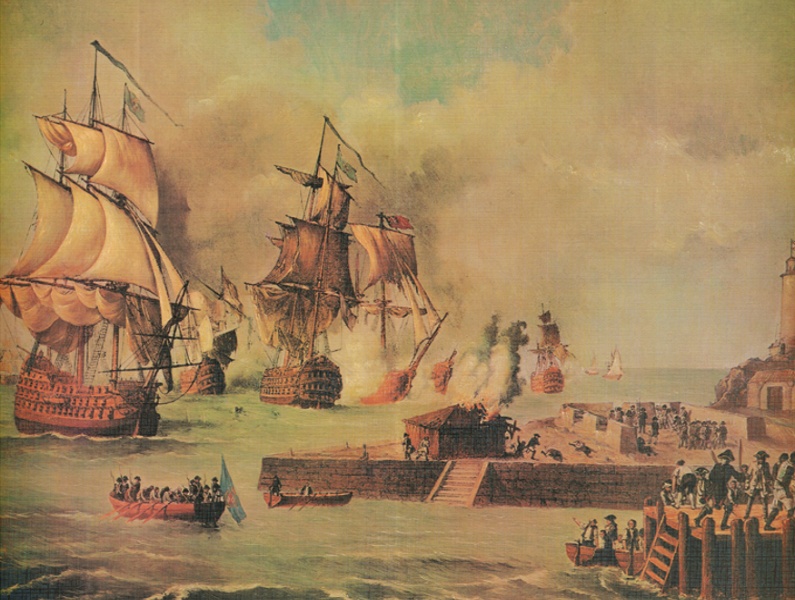
I’ve always found it particularly interesting how we remember the great victories of history but the disasters seem to be largely forgotten and are often nothing more than mere footnotes today. In the west we are treated to an Anglo-centric education/version of history that largely omits these great failures. Its as if they are not to be spoken of and have been quietly swept under the rug.
There are actually quite a number of notable disasters in British naval history. So which one is the worst?
Among those greatest disasters that may come to mind are:
- The Four Days Fight 1666 – Still considered by many historians to be the largest and longest naval battle in history. With English trade on the point of collapse from Dutch privateering around the globe, Admiral George Monck went to sea with the grim purpose of the destruction of the Dutch navy in a single decisive battle. The English subsequently lost terribly in the next four days against the great Dutch Admirals Michiel De Ruyter and Martin Tromp. The English lost ten ships including two 1st rates (HMS Prince and HMS Royal James), 2000 English sailors captured, 1500 wounded, and 1500 killed to include two Admirals (Sir Christopher Myngs and Sir William Berkeley).
- The famous Raid up the Medway 1667 – where the Dutch broke the boom guarding the Thames river estuary and proceeded up the river guided by a disgruntled English Navy pilot that had not been paid in years. They subsequently landed troops (800 Dutch marines) at several locations wreaking havoc and burned the dockyards at Chatham(fires went out). Subsequently, most of the English capital ships were destroyed by the Dutch. Monck himself ordered the deliberate scuttling of 30 English warships to prevent them from falling into enemy hands. The final humiliation was the capture of the English flagship Royal Charles which was towed back to Amsterdam amid great jubilation. A general panic ensued and the population of London (including the King and Court at WhiteHall) fled for the countryside. The fleeing citizens fled while hearing the explosive carnage in the distance and in view of giant black plumes of smoke rising from the Royal Navy dockyards and the burning fleet. This one action forced the English into rather quick peace concessions.
I believe that the only reason this one is remembered at all is because of its preservation in Dutch paintings and all of the commemorative paraphernalia that was created in memory of their great victory. The Dutch obviously haven’t forgotten this one! LOL. Still it is not the greatest British Naval disaster.
- The Battle of Beachy Head (Fr. Battle of Bévéziers) 1690 – Where a combined Anglo-Dutch fleet was soundly beaten by the French. The Dutch with only one squadron of around twenty ships did a lion’s share of the fighting during the first part of the battle with no English help – and were forced to retire with the loss of two warships and a third captured facing the onslaught of 75 French ships. Then came the English turn. The English lost several warships and were battered so badly they too had to retire. The French pursued and burned seven more straggling and largely dismasted Dutch warships and an additional English warship. The French took control of the channel for the first time since the Middle Ages. They landed troops on English soil and burned a couple towns. If they had fully exploited the victory they could have destroyed the English fleet in detail. The funds to rebuild the navy were unavailable and the resulting desperation was the catalyst for the creation of the Bank of England. Ironically the 1.2 million pounds raised in the twelve days after the battle came mainly from the Dutch. Half of that sum went to rebuilding the English navy.
If the French HAD more aggressively pursued the English fleet, it could have been one of those great “what if” upsets that would have dramatically changed history. Certainly then it would have been the greatest English naval disaster. But no – this is not the greatest.
- The loss of Admiral Sir Cloudesley Shovell’s fleet in 1707 (only the HMS Lenox survived) wrecked upon the rocks off the Scilly Isles. The famous story that comes down to us is that Shovell had made a position calculation error in navigation and ignored the warnings of an able seaman that was from the area. The seaman was hung for his insubordination and the fleet was lost on the reefs in the subsequent storm. Shovell survived the ordeal and was washed up onto the beach only to be beaten to death by local women robbing the thousands of washed up drowned corpses. They wanted and took his fine emerald gold ring. This disaster prompted the “Act of Longitude” by Parliament with an award of 20,000 pounds to be given for a solution that brought position accuracy to within 30 nautical miles.
- The Blockade of Porto Bello 1727 – Where Vice-Admiral Francis Hosier was ordered to blockade Porto Bello and seize the Spanish treasure ships there if possible. The Spanish refused to allow the treasure ships to leave with the blockade present and so simply unloaded the treasure. Hosier stayed on station for six months strictly following Admiralty orders. The foul climate and disease wiped out his fleet’s manpower. So depleted at one point was his crew compliments that he was forced to send ships back to Jamaica for reinforcements. No battle or engagement was ever fought and the British finally withdrew after the Admiral’s own death accompanied by numerous other officers to the Yellow Fever. Modern estimates put the British casualties at over 4,000 men.
Hosier’s body was not buried at sea, but was interred within the ballast of his flagship, the HMS Breda. Ironically in Jamaica his body was transferred to the smaller Royal Navy Sloop, the HMS Happy Return for the Admiral’s return to England.
A poem was latter written about this disaster. Hosier’s early career was quite distinguished and the loss of so many men including their leadership was seen as a great Admiralty and Government snafu of mismanagement. Admiral Vernon later took Porto Bello during the War of Jenkins Ear. The poem is a political criticism and “ad memoriam” combined. http://www.bartleby.com/333/81.html
And now drum-roll please……The Greatest Disaster in British Naval History.
In 1741 a campaign began that was fought from March until May of that year – The Battle of Cartagena de Indias.
Many of you have heard me criticize the time after the Golden Age of Piracy as being the “Era of Utter Boredom”. From 1725 to 1750 the western world had largely stabilized into an era of mostly peaceful and economic expansion. When the dust settled from the wars of succession, Britain had surpassed all competitors as the great power of the western world. Her trading empire’s tentacles encompassed the planet. Her navy was now second to none and the merchant class and trading company corporate owners controlled and swayed political power to their whims. They wanted war because of the closed and limited trade with Spanish America. They greedily looked at Spain’s holdings in the Americas as weak and ripe for the picking.
So the exception to my criticism of this era comes in the way of the War of Jenkin’s Ear (1739-1748), called by this odd name because of Captain Robert Jenkins who claimed his ear had been cut off by the Spanish coast guard when they boarded his ship the Rebecca. He showed his pickled ear to Parliament as proof – and that outrage caused a flurry among war hawks which became the justification for war.
So convinced were the British that they would win the great campaign at Cartegena that thousands of commemorative medals were struck before the battle was even fought. They had every reason to believe that they would win. The size of the invasion force was massive.
The British fleet consisted of 186 ships to include 29 ships of the line and 22 frigates. There were a total 27,400 military personnel to include a land force component of 12,000 men. The land forces consisted of two British Army regular infantry regiments, the 15th Foot and 24th Foot, and the 43rd regiment of foot consisting of 3,600 Virginia militia from the British North American colonies. In addition there was a large force 6,000 marines.
The long campaign consisted of numerous bombardments both by sea and by landed artillery batteries upon the outlying defensive forts and inner harbor forts of Cartegena. The bombardments were followed by numerous assaults into breaches made by the artillery. There ware also several inconclusive sea skirmishes that did manage to destroy some Spanish ships but caused more damage overall to British ships and left the Spanish still in control of the harbor itself. The outer fortifications were taken by the British, but they could not take the inner harbor forts or the town itself after numerous bloody attempts.
The battle became one of simple attrition and the Spanish behind their heavy fortifications were able to grind away and wear down British forces who were also losing hundreds of men a week to sickness and disease alone. By May, Admiral Vernon had no other choice but to withdraw.
After the battle, Vernon sent a letter to the cunning and experienced Blas de Lazo, the senior Spanish Naval Commander responsible for Cartegena’s defense. The letter read: “We have decided to retreat, but we will return to Cartagena after we take reinforcements in Jamaica”
Blas de Lezo insultingly responded , “In order to come again to Cartagena, the English King must build a better and larger fleet, because yours now is only suitable to transport coal from Ireland to London”
British losses were staggering.
Men: over 11,000 dead, 7,500 wounded/incapacitated. Only 300 of the 3,600 Virginia Militia made it home alive.
Ships and equipment: Six British ships of the line destroyed, four frigates and 27 transports lost. Six of the transports were burned for lack of crew and another sunk on the way back to Jamaica. 1500 guns lost, 17 ships of the line were heavily damaged, several requiring towing and most needing complete refits.
Six weeks after the withdrawal the embarrassing news of defeat reached London. The government prohibited the release or publishing of the information to the public. They also obviously recalled the commemorative medals. There were major repercussions Geo-politically. Once Parliament learned of the defeat and the news started leaking out to the public, Robert Walpole’s government collapsed in a matter of weeks. George II was forced to remove promises of military help to Prussia in alliance negotiations. France and Spain both saw Britain as off the gameboard for awhile and moved on Austria. The War of Austrian Succession began as a result.
So we all remember the Battle of Gravelines (Defeat of the Spanish Armada) and Trafalgar. I say that it is our duty as pirate and naval history aficionados to also remember these other notable battles. So remember the Battle of Cartegena de Indias. Pride is pride and has its place. However, a truly balanced study of history demands that both victories and defeats are studied. The defeats are useful in study if for no other reason than to help those in power to not make the same stupid mistakes over and over again.
Aaron R. Shields a.k.a. MK
Author’s comments: This article was particularly fun for me to write because it forces the Anglophile and Royal Navy devotee (which are so common among youths today brought up on the Aubrey-Maturin novels and Hornblower), to take a more objective view at history. It serves to illustrate that their precious and idyllic Royal Navy is not as perfect or undefeated as they would wish to believe. What is also amusing to me is that this article was originally written on PA!. I had asked them to delete my articles and news stories. They failed to follow that wish EXCEPT for this one single article here which was deleted. LMAO! Unfortunately I don’t have the notes and comments that went along with this article. They were very good, extensive, and thought provoking.
The article caused a very long debate which stimulated a lot of additional commentary. This debate was not about the disasters that I list above, but about other disasters in British naval history that I was told I should have included and did not. The arguments also centered around Blaz de Lezo and that he was perhaps not the great Spanish hero that he is given credit for being among the Spanish people. I was pro-Lezo and even described him as the Spanish equivalent of Nelson. There is no doubt that he was a great man and that is why I made a character in his honor for GOF ERAs2.
It is unfortunate that this commentary no longer exists – but still very amusing to me that THIS is the one article of mine that they chose to delete. It goes along with what I’ve said about bias and their staff. I admit my own bias, but it is tempered with a much more extensive knowledge of history than most people possess – along with the fact that I don’t believe in censorship, and usually honor peoples wishes with regards to their beliefs, opinions and property (intellectual or otherwise). The only time I don’t feel I must honor this code – is if I myself have been a contributor to the effort/item or have had my own property or opinions violated.
I plan to write an article in the future specifically devoted to Blaz de Lezo. Only half of his career took place during the Golden Age, but there were notable acts early on and someone this great just can’t be ignored. Admiral Blaz de Lezo
MK
EAST VS WEST: THE FIRST BATTLE OF WESTERN COLONIAL EXPANSION IN ASIA
On 3 February 1509 a large joint naval force led by Malik Ayyaz, (Captain of the City of Diu and Commander of the Sultan of Gujarat’s fleet), the Mamlûk Burji Sultanate of Egypt, the Zamorin of Calicut with support from the Turkish Ottomans, the Republic of Venice and the Republic of Ragusa were soundly defeated by a much smaller but greatly superior Portuguese fleet off the western coast of India – in view of the fortress port of Diu – east of what is now known as the Persian Gulf.
The Battle of Diu, is one of those often forgotten historical firsts – or turning points – that mark the beginning of a major chapter in history. In this case, the beginning of the Portuguese Empire’s dominance of the East Indies and India for a hundred years until their loss to the Dutch beginning with the Dutch-Portuguese War of 1602.
The Portuguese are remembered these days as great explorers and traders. However in the 16th century they were known by those that opposed them as the most militarily formidable, fearsome, cruel, and bloodthirsty pirates and conquerors the world had ever known.
By 1509 their reputation was already well established. The famous “explorer” Vasco da Gama is well known affectionately by most grammar-school students in the west, as the man who in 1498 first discovered and opened the eastern trade route to India – sailing around the southern coast of Africa (The Cape of Good Hope). However most would be shocked to find out that upon his arrival in the Indian Ocean, his fleet plundered and pillaged indiscriminately – preying upon dozens of settlements on the east coast of Africa all the way to India. As soon as he reached the Indies, he immediately began to pit local Indian factions one against another in order to gain Portugal’s first foothold in India. He waged war in the area around Calicut and was known to be completely heartless – granting no quarter to prisoners.
Da Gama also has the dubious honor of committing the first known acts of piracy by a westerner in the east. This particular act is an atrocity so horrible that it makes later “bloodthirsty” pirates like Blackbeard look like effeminate school boys. Da Gama’s fleet seized the Arab ship Meri in the Arabian sea in 1502. This ship was loaded down with valuable silks and precious goods – which the Portuguese immediately looted. The vessel also carried over 300 Muslim passengers on their way to Mecca for the Haj(pilgrimage).
Once the ship had been picked over, Vasco da Gama ordered the passengers confined below, the hatches bolted shut, and the ship set afire. Before the Portuguese could execute this villainous act, some of the Muslim men, wise to what was unfolding, busted open the hatches, and put out the fires. They put up a valiant fight, but in the end every last man woman and child was heartlessly butchered. Da Gama spent most of the time during this carnage in his quarters – indifferent to the cries of his victims.
With his ships filled to bursting with spices and silks he set sail for home, leaving behind such a path of misery and destruction, that his name is still remembered with infamy in the East to this day.
A known dread and fear of the Portuguese by the indigenous peoples of the east has survived the centuries in their narratives, poetry, and even bedtime stories. The gigantic vessels of the invaders (known as “the Black Ships” to those that regularly encountered them), were seen as unstoppable floating fortresses of doom bristling with hundreds of guns. It is with this reputation and dread in mind, that one can easily imagine the mood and fear that must have prevailed as the Captain of Diu, Malki Ayyaz hastily assembled his joint fleet of ships and men to oppose his enemy – Francisco de Almeida, Viceroy of Portuguese India.
Almeida had gone rogue. He wasn’t even supposed to still be there. He should have been on a ship bound for Portugal. His replacement Afonso de Albuquerque had arrived from Lisbon. (incidentally Albuquerque is also remembered for his infamous reputation of revenge and brutal seizure of Malacca in 1511) Instead of a warm greeting and the usual “hand-over” of responsibilities, Almeida immediately threw his replacement in jail without explanation – and hastily disembarked on his long prepared and planned expedition to assault Diu.
Why? In short, this was personal. Almeida was consumed with hatred and a desire for brutal revenge against Mirocem (Amir Husain Al-Kurdi), and Malki Ayyaz, the Captain of Diu and commander of the Sultan of Gujarat’s Egyptian Mameluk fleet. Less than a year earlier a force of several Portuguese ships was surprised by this fleet. During the skirmish, the greatly outnumbered Portuguese ships escaped – that is all – but one. This was not unusual, as the Portuguese carracks or “naus” towered so high out of the water, and were always so well armed and very well manned – that they were extremely difficult prizes to capture.
Malki Ayyaz concentrated all of his forces on this one single ship – surrounding it and assaulting it over and over again until Mirocem (Amir Husain Al-Kurdi) was finally able to take her. There were only nine survivors. Among the dead was the ship’s (and flotilla’s) commander, Laurenco de Almeida – the son of the Viceroy of India.
Dom Francisco was grief-stricken when the news of his son’s death reached him. He immediately began to plan an expedition of revenge. In 1505, the King of Portugal, Manuel I, had sent twenty one large Portuguese warships (carracks) to bolster his Empire in the east. Over the course of four more years many more had arrived as well.
The fleet that the Viceroy now commanded was not the small flotilla of a few medium carracks his son had led. This was a large well armed fleet of eighteen of the largest warships on the planet at that time. On board were at least a thousand sailors, and over 1500 heavily armored soldiers commanded by dozens of knights. In addition, four to five hundred auxiliary troops of native militia (mainly from Cochin) were aboard.
The senior military and government officials of Diu knew that Almeida was coming. They had received a letter months earlier from the Viceroy. In the letter Almeida makes his intentions very clear:
“I the Viceroy say to you, honored Meliqueaz captain of Diu, that I go with my knights to this city of yours, taking the people who were welcomed there, who in Chaul fought my people and killed a man who was called my son, and I come with hope in God of Heaven to take revenge on them and on those who assist them, and if I don’t find them I will take your city, to pay for everything, and you, for the help you have done at Chaul. This I tell you, so that you are well aware that I go, as I am now on this island of Bombay, as he will tell you the one who carries this letter.[2](in Portuguese)”
The city officials of Diu made several appeals to the Viceroy to diffuse the situation, stating that the Portuguese prisoners had been well treated and fed. They also offered the prisoners return without ransom, and went even further – offering the authorization of a permanent Portuguese trading station at Diu. For most political or military arbitrators, this would have been a very attractive proposal – but not for Almeida. He ignored the letters.
As the Portuguese fleet closed upon Diu, the two naval forces could not have been more different. The contrast must have been a sight to behold. The leaders of Diu had managed to talk the local Europeans into joining them. The Venetians and Ragusans welcomed the chance to oppose the Portuguese. They had once enjoyed an almost virtual monopoly on the eastern spice and silk trade via the Red Sea and Levant ports that had received their goods overland from India. The Portuguese had changed all the rules and had completely upset the balance – with an open sea route to the riches of the Indies. The European vessels that were in Diu had not been built there nor sailed there. They had been disassembled in Egypt, brought overland to the Red Sea in pieces and reassembled there.
The Ottoman Turks and the Egyptian Mamluks hated the Portuguese as well and had been fighting them for years along the Levant and North African ports of the Mediterranean. Overall, Diu’s defending forces were comprised primarily of forty or more light galley class vessels with a handful of smaller Italian naos. The Turks had six large galleys and another six medium class carracks. The Sultan’s fleet was composed of around eighty low freeboard dhows and prahas. Altogether Diu was able to assemble a joint fleet of over two hundred and fifty vessels of all shapes and sizes to oppose the Portuguese. However, only twelve of these ships were of a size that might be able to challenge the larger Portuguese warships in a “ship-to-ship” fight.
The strategy of the Gujarat-Mamluk-Khozikode side was to take advantage of the harbor’s natural defenses – relying on a stone fort to their rear which possessed decently sized artillery pieces to duel it out with the great Portuguese carracks.
Almeida saw that his enemies had bottled themselves up in the harbor and this was probably just what he had been hoping for. He must have been very pleased. He drew his ships into a long but tightly formed semi-circular line with broadsides facing the harbor of Diu. His fleet was composed of twelve carracks of the largest size (some of the largest warships in the world at that time). Each of these ships probably had over a hundred guns of various sizes. Although most were smaller guns made for taking out enemy sailors and soldiers on enemy ship’s decks below, at least ten guns per each broadside were some of the largest and longest ranging guns available in 1500.
Each of these breech-loading “bombards” would have weighed in at two or more tons and could hurl an iron or stone ball over a foot wide – (weighing over fifty pounds each) well over a miles distance. That may not seem like much now, but in 1509 – that was “shock and awe”. The Viceroy’s other six ships were caravels and medium classed naus, but still all were very well armed and swarming with heavily armored naval infantry.
Almeida gave the signal to fire and a torrent of heavy cannon-fire broke the relative silence – with hundreds of deafening reports and dozens of almost simultaneous subsequent shattering impacts. The flying projectiles devastated the fortress of Diu and the vessels of the tightly packed fleet to its front.
The harbor ships and the fort returned fire, but most of their guns couldn’t accurately range the Portuguese fleet or fell short. The fort and ships that could answer, were mostly ineffective with their shot harmlessly bouncing off the heavy Portuguese hulls or missing altogether. The Portuguese continued their massive bombardment for hours sinking dozens of enemy vessels and putting most of the fort’s guns out of action. Unlike Diu’s defenders, the Portuguese gunners were well trained professional artillerists.
With a shifting wind towards the port becoming advantageous, Almeida gave the signal to make sail and advance upon the port. The heavy carracks mowed through the small light enemy craft like frail, dry twigs – breaking and sinking many under their great bows. The Turk and Mameluk archers loosed thousands of arrows upon their Portuguese attackers, but the shelter that the massive ships allowed the westerners and the armor that they wore, made the arrows more of a minor nuisance than a serious threat.
Hand-to-hand combat in the harbor and the debarking of heavy naval infantry and knights ashore followed. Even though the Portuguese faced many times their numbers, the battle hardened and seasoned Christians were so well trained and heavily armored, that they suffered only a handful of casualties. As a result, once the Portuguese forces were all ashore a general route of the joint Gujarat-Mamluk-Khozikode forces ensued in less than an hour of heavy fighting. Diu’s defenders had fought bravely and as long as they possibly could, – but they were just simply plain outmatched in every way possible – technologically, tactically, in training, in equipment, and in capability.
The battle ended in a decisive victory for the Portuguese, with massive casualties on the Gujarat-Mamluk-Khozikode side. In the aftermath, Malik Ayyaz handed over the prisoners of Chaul, dressed and well fed just as they had said in their letters to Almeida. Among the spoils of battle were three royal flags of the Mamelûk Sultan of Cairo – sent to Portugal and still on display in the Convento de Cristo, in the town of Tomar, home of the Knights Templar. In addition, a payment of 300,000 gold xerafins, was made to the Viceroy. Also the leaders of Diu surrendered full control of the city from the Sultan to the Portuguese, but Almeida refused the offer because he thought the city would be too expensive to maintain. The Portuguese did leave a garrison behind and did set up a trading post.
With the battle over, Almeida now turned his mind to his brutal and desired revenge – the motivating factor of the campaign. The Viceroy ordered most of the men of the Sultan’s fleet composed primarily of Egyptian Mameluks to be hanged, burned alive or blasted to pieces – tying them with their bellies against the muzzles of his cannon.
In an almost A.T. Mahan-like prophetic comment, Almeida mused after the battle:
“As long as you are powerful at sea, you will hold India as your own; and if you do not possess this (sea) power, little will avail you of a fortress on the shore.”
Almeida had satiated his burning lust for revenge, but he would follow his son to the hereafter soon enough. Almeida released Albuquerque on his return to Bombay and transferred power of the Portuguese Indies over to him. He disembarked for Portugal in November, 1509. As in the case of so many of these intensely interesting stories of the notables of this age, he never made it home. Only a month later in December, he was killed by Khoikhoi tribesman, in what is now modern Capetown, South Africa.
This is an incredibly fascinating period in history. I find it interesting that the first major battle between east and west during the colonial era was not motivated by profit, greed, power or territorial expansion – it was to extract personal revenge – in short, “to get even”. I wonder….from that time to this, has either side ever really got even since? Hmmm.
MK
For further reading I recommend:
Wikipedia: Battle of Diu 1509
Portuguese Voyages, 1498-1663: Tales From the Age of Discovery, Edited by C.D. Ley,
Pacific Voyages: The Encyclopedia of Discovery and Exploration, Doubleday
The Mediterranean, By Ferdinand Braudel
The Great Sea, By David Abulafia (still reading this one – EXCELLENT!!!)
For pictures of the great Portuguese carracks I describe in the article, see my Flickr photo set on Carracks and Naus here: Carracks on FLICKR
modernknight1, Feb 4, 2013
#1
Hylie Pistof likes this.
Categories: Uncategorized
Comments
Hylie Pistof
Those were violent times and there were no "good guys". Christians had been being burned alive for heresy for 300 years already. Why would it be expected that anyone else would be treated any better? Look to the fate of the Aztecs and Incas.
Another sometimes forgotten rogue was Ponce De Leon. He is known today for that Fountain of Youth stuff, but he led an expedition from Florida to the Mississippi River killing pagans all the way. When later French explorers came down the Mississippi River at an area where Leon's monk recorded there were 34 villages, they found 7.
Hylie Pistof, Feb 4, 2013
#2
modernknight1
I agree with most of what you say Hylie. However, I will say that there were a few "good guys" mixed in there. That's why I think the good guys stand out so much when one comes along - because they were surrounded by the bad guys.
Bertrand du Guesclin has always been one of my favorites. He started out as a commoner and ended up the most powerful man in France. His great quote that he is most remembered for when talking to his generals and commanders before battle (and this is absolutely exceptional considering we're talking about medieval times) is "Remember gentlemen that the women and children are not your enemies"
Piet Heyn is another hero. I will start posting the rest of my story soon - there has been renewed interest lately. I show early-on in the story how he was so brutal and so full of hate, but something changed in him. I took some liberties here with how that occurred, but he was known the be a very real humanitarian to those that he conquered and the prisoners taken later in his life. I am one that thoroughly believes that people CAN change.
I sincerely think that part of what has evolved over time to make war more "civilized" was a gentle, intelligent disposition to the conduct of war when one has no other choice but pursue it. How a force attacks and treats civilians, women and children says so much about that culture. Instead of continuing to progress in this arena, it is too bad we seem to be "de-evolving" in the opposite direction these days.
MK
THE GREATEST FRENCH CORSAIR
07 January 2015
On February 19th 1713 a French squadron composed largely of corsairs under the command of Captain Jacques Cassard entered the harbor of Willemstad on Dutch Curacao and seized Fort Amsterdam. Cassard then demanded the immediate surrender of Curacao and a ransom of 400,000 Ducats to spare the city of Willemstad from bombardment and looting.
Willemstad was one of the largest, richest and most cosmopolitan cities in the Americas. It was fortified by an impressive city wall and had over a dozen well placed forts guarding all the entrances to the large Caribbean island. It had a reputation of being impregnable and had never been taken. Others had tried before. The last attempt was made by the French in May of 1678 when Admiral D’Estrees led a large scale invasion force to its doom – lured by the craftiness of a smaller fleeing Dutch naval force onto the shoals at Las Aves in a moderate fog. The French lost twelve ships of the line on the reefs that day and thousands of men perished on the shoals with no rescue. It is still considered one of the greatest disasters of naval history.
The sudden appearance of a French naval force in 1713, was a shock to the Dutch and it was most unexpected. The Dutch having completely underestimated regional French sea power had left Curacao very lightly defended. They were not incorrect in that assumption.
The French had lost terribly during the War of the Spanish Succession with most existing (hundreds of) French merchant ships already being taken by English and Dutch privateers. The French West India Company was ruined and most French colonies were now in the hands of the (Anglo-Dutch) allies. Only Martinique and Quebec were still in French hands. The only reason Quebec (which was very lightly defended at this time) was spared was because of the storms that had crippled Admiral Hovenden Walker’s invasion fleet. http://en.wikipedia.org/wiki/Hovenden_Walker
The Dutch had no choice but to acquiesce to the French demands and surrendered. The ransom was raised and the 400,000 Ducats were presented to Cassard. Captain Cassard, good to his word spared the city and withdrew his troops (the majority being pirates and privateers). He knew he could not hold Curacao for long and that the probability of a superior Dutch or English naval force arriving within a week or less to be very likely.
Cassard’s treasure pile was now unequaled. At the end of his 27 month armed foray into the West Indies, he returned to France with an amassed fortune equivalent to over eleven million English Pounds – which after paying his crews, he dutifully cataloged and turned over to the French crown.
Jacques Cassard’s career reads like a novel. Born 30 September 1672, to a family of moderately successful merchants in Nantes, he first went to sea on one of the families own ships at the age of seven. With the loss of his father a few years later the family becomes destitute and Cassard with his mother and siblings go to work aboard fishing vessels. At 14 years he becomes a mate on his uncle’s ship in the French Merchant Navy.
A few years later in 1697, he accepted a full commission in the French Navy at the age of 25. He was assigned as a Lieutenant on the bomb-ketch Éclatante. Later that year with of a flotilla of bomb-ketches (part of the squadron commanded by Admirals Ducasse and Pointis), he took part in the bombardment and Siege of Cartegena. (Nine Years War http://en.wikipedia.org/wiki/Nine_Years’_War )
During the action he was given his first command – the gunboat Dazzling. By the end of the siege he was given command of the whole bomb vessel flotilla. Later that same year he led a band of corsairs in the seizure of the city of Santo Domingo. In the official after-action report presented to the King and Court by Pointis, he is mentioned prominently as the man responsible for silencing the Spanish cannon batteries and as having conducted himself under fire with the greatest bravery – being the first man into the gap in the walls.
With peace established the following year, Cassard went back to the French “Merchande Marine” the captain of his own trading ship. However, a few years on with the outbreak of the War of the Spanish Succession in 1701, Cassard again was commissioned, this time with the rank of Lieutenant Commander. He was given command of the six gun privateer Laurier. and accompanied by his brother Lieutenant Drourad Cassard. He was ordered to raid and harass English and Dutch shipping in the Caribbean.
His first prize was taken in a hard won fight against the English brig William Duncan. A quick succession of prizes followed with two Dutch Indiamen and three English merchantmen. He transferred as much armament possible to the brig making it his flagship and sent the other ships loaded with sugar, rum and tobacco to Martinique.
With his exploits now making their way back to the French court, Cassard is given a bonus of 26,000 livres (2000 English pounds) and command of the privateer corvette Le Saint-Guillaume in 1705. Cassard now raided shipping off the southern coast of Ireland. In 1706, flying the English ensign in deception – he was mistaken by the English for a coastal patrol vessel – boldy sailing into Kinsale harbor – seizing six English merchantmen, looting them and extorting 650 English Pounds from their captains before setting them free. He repeats this act with a French privateer squadron a few months later, sailing into Cork, Ireland, capturing twelve ships and pillaging the town.
By 1708 he had taken thirteen more prizes worth a total of 450,000 Livres (37,000 English Pounds). At Dunkirk he is promoted to commander and given command of a captured 40 gun English frigate, the Jersey (HMS Jersey built 1691). Now hunting on one of the main English trade routes off the southern coast of England near the Scilly Isles, Cassard captures six additional merchant vessels as prizes, and loots and releases thirty-three more.
A little over a year later Cassard is ordered to the Mediterranean to escort wheat convoys from North Africa. This was considered a very important mission as the French Army needed to be fed and the region of Provence was experiencing a famine. Cassard was given the command of the 68 gun “ordere seconde” (third rate) Vivid and the smaller 58 gun Serious.
Leading the large wheat convoy of 25 vessels, Cassard is able to avoid entanglements with the Barbary corsairs, but isn’t as lucky avoiding the English Navy. The convoy is attacked by an English naval privateer fleet of fifteen ships. Cassard takes the initiative using the wind to his advantage and drives into the right wing of the English line with Vivid and Serious. The French gunnery disables five of the English vessels and forces the others to retreat to Malta for repairs.
The Vivid, sustaining heavy damage is entangled with one of the captured English ships. She is also holed in eight different places. Cassard has no choice but to make repairs and cut his ship free – but refuses to allow the convoy to sit idly by and vulnerable to more possible attacks. He ordered the grain convoy to continue on to Marseille alone while he cut his ship free and continued repairs along the way. All 25 ships of the grain convoy successfully reached Marseilles and Cassard followed them into port a day and a half later.
A continuing trend in Cassard’s life begins with the Alderman of the City of Marseilles refusing to pay the usual fees for the escort – contending that the ships arrived alone without Cassard. However, the King hearing of the battle sends his Minister to congratulate Cassard and offers him a knighthood (the Cross of Saint Louis). Cassard refuses stating that he is not worthy of the honor. He files a lawsuit with the crown against the City of Marseilles for the pay he should have received.
He accepts a another escort mission the next year, but at the last minute is given new orders from the Chancellor of France http://en.wikipedia.org/wiki/Louis_Ph%C3%A9lypeaux,comte_de_Pontchartrain to command a large squadron consisting of, the Perfect (74 guns), Toulouse (68 guns), Serious (58 guns), Siren (60 guns) and the frigate Phoenix (50 guns) to relieve a blockaded merchant fleet of 84 vessels bottled up in Smyrna by an English naval force. In the resulting Battle of Syracuse http://en.wikipedia.org/wiki/Battle_of_Syracuse(1710) Cassard was able to free the heavily laden merchantmen and captured the HMS Pembroke (64 guns) and the HMS Falcon (36 guns).
The large convoy makes it safely to Marseilles, but when Cassard went to the Alderman to obtain his pay he was refused again on the grounds of the pending court suit. He was angry and bitter knowing that he had saved a convoy worth 8 million Livres and received nothing in return for the great risks he took.
Adding insult to injury, Cassard again answered the call to duty – this time it was a distress call from the Duke of Vendome who was desperate to have the English blockade of Catalonia broken. Cassard was promised half a million Livres for the task. Cassard broke the blockade and releived Catalonia, but he never saw one Denier for his trouble. He petitioned the crown with yet another law suit for compensation.
He took one more escort mission in 1711 – safely accompanying a convoy of 43 ships to the Spanish city of Peniscola. He at least was paid for this mission.
Cassard longed to do something different and with the seizure of Rio de Janeiro by the famous French corsair Rene Duguay-Troin http://translate.google.com/translate?hl=en&sl=fr&u=http://fr.wikipedia.org/wiki/Ren%C3%A9_Duguay-Trouin&prev=/search?q=Ren%C3%A9+Duguay-Trouin&hl=en&biw=1776&bih=826&sa=X&ei=ft8iUbXqJqOKiALSu4CwAg&ved=0CEAQ7gEwAQ he petitioned the court for a new command. In December of 1711 the King gave Cassard command of a squadron consisting of three ships of the line and five large frigates. His orders were to raid, harass, and seize Dutch, English, and Portuguese shipping from the coasts of west Africa all the way to the Caribbean. It was with this squadron that his famous twenty-seven month reign of terror began.
He started with the Portuguese and the Cape Verde islands. His seizure of Santiago and its warehouses overburdened his ships and he had to leave over a million Francs worth of loot on the beach. He stopped in Martinique for repairs, and to transfer the spoils from Santiago ashore.
The pirates that had been with him at Cartegena and Santo Domingo had not forgotten his actions and came to join him. Now at the head of a moderately sized fleet, he seized the English islands of Montserrat and Antigua before heading to the Dutch possessions in Suriname . To the shock of the Dutch, he besieged and captured Surinam. The governor asked him for terms, and Cassard agreed to return Surinam to Holland for the amazing sum of 2,400,000 pounds. The Dutch paid the ransom.
After a string of prizes and other harassments on Berbice and Askebe (or Essequibo ), two other towns in Dutch Guiana , Cassard returned again to Martinique, to the cheers of the French citizens, amazed at the wealth Cassard heaped upon their port from the enemies of the homeland. Moving out to sea again, Cassard first seized and ransomed Dutch St. Eustatius .
He then moved on to the northeastern continental coastline of South America, raiding Dutch settlements with attacks on Paramaribo and finally the large island of Curacao. Curaçao was the crowning achievement of the privateering campaign. It was a larger and richer target than all the previous ones, but also much better defended. Cassard expected much more resistance. What an amazing record of success!
Jacques Cassard’s expedition to the Caribbean was one of the greatest in history, and after another stop in Martinique, he finally returned to France with the total captured loot estimated equivalent to over eleven million English Pounds.
Cassard returned to France a hero, but scarred, tired, and worn from years of service. With the Treaty of Utrecht finally bringing the bloody eleven year long war to an end, Cassard retired from privateering. He was finally given full promotion to Captain in 1713 even though he had fulfilled the role of Admiral multiple times during his career. Often titled nobles were the only ones given these high honors and this is understood better when one sees the costly outlay of funds required going along with the titles. For his trouble and service Cassard was given a knighthood and presented the Cross of Saint Louis in 1718.
However he was not granted a pension.
In the worst of all ironies, Cassard was almost broke. How could this be? As with so many other nations, Captains were often forced to provision and fit out their ships, pay crews, and finance expeditions themselves. The idea is that the Crown or City or noble calling for the service would recompensate the responsible commander after the service was complete. With privateers it was also often understood that the full amount of booty would never make it back to the Crown because the commander would skim what he wished off the top to compensate himself.
With Cassard this was an impossibility. He was a man of total honor and refused to embezzle or take anything for himself that was not honestly granted to him. One of Cassard’s uncles had been a Jansenist priest and had taught him honesty, honor and Christian virtue as a very young boy. As a result, Cassard would hold this code of honor as sacred his whole life. Cassard would provision his ships with good stores and pay his crews before he paid himself. As a result, the numbers on the balance sheets and ledgers were correct. Cassard had given the state everything he had captured and believed in the Crown and the government. He believed in the system and believed the system would eventually give him what was owed.
Sadly this led to years of Cassard fighting in the courts and appealing to the offices of Cardinals, Ministers and even the King’s Court itself seeking to be recompensated for his service. Year after year he patiently waited, getting older, his clothes more tattered and out of style until he was a known object of ridicule among the sneering youthful aristocratic courtiers that flocked and gravitated to centers of power.
In a brief moment of justification and validation, the famous Corsair Rene Duguay-Troin heard about what was happening and wanted to meet Cassard. He came to the King’s court and saw the ridicule for himself. It angered him. To the court’s surprise, the well dressed and well known Duguay-Troin embraced Cussard as a brother. He heaped adoration upon him and then turned to the crowded and surprised audience buzzing in the great hall. He chastised them saying: (paraphrased from French)
“You do not know this man, gentlemen? Too bad for you! Do you know who the greatest man living in France is at this very moment: it is Cassard! I would give all the actions of my whole life for his. You do not know the great feats he has done and they are not known here, but let me tell you that he is still talked about, feared and dreaded among the Portuguese, the English, and the Dutch. And he ravaged their possessions from Africa and all throughout America. He could do with a single ship what no other could do with a whole squadron.”
In another slap in the face one of the Ministers finally agreed to grant Cassard a meager pension. The small amount enraged Cassard considering everything he had done for France. He is said to have responded to the Minister Maurepas: (paraphrased from French)
– “Keep your alms, he replied proudly, I do not want it. I do not want that, ‘as a favor or as compensation, I have the spoils of the people. I am ruined for the king’s service, I ask only that the king pay me the three million I advanced to him. ”
The Minister dismissed Cassard as an ingrate and a maniac.
Cassard continued to appeal to and seek justice from Cardinal Fleury , the tutor, adviser, and chief minister to King Louis XV, for the fair amounts owed to him. Cassard’s proud, commanding, and somewhat abrasive character did little to better his situation with men that were used to being flattered with false courtly manners and shallow compliments.
Facing the haughty attitude of the King’s minister Cassard finally snapped. In front of the court he finally lost his temper, shaking his fists and loudly hurling insults at the man. The shocked Cardinal ordered Cassard to be seized and taken into custody. He then declared him mentally insane and had him committed to fortress of Ham in the Somme. Obviously, there was no valid assessment of, or rehabilitation for those that were pronounced mentally insane by those that held power in those times. It was a cruel and insulting sentence for one of France’s greatest heroes.
The Greatest Privateer in French history, Captain Jacques Cassard died at the age of 68 years, in a dank dirty prison cell on January 21st 1740 – after four years of detention. He was buried the next day in a common grave in the parish of St. Martin of Ham.
MK
Epilogue:
I was shocked at how little exists on this man. People prefer to worship the fictional Hornblower when there were real heroes like this man. Very little in English exists on this great hero. I pulled apart my vast library to find whatever I could. French websites provided a lot of material as well, but even then much of it was erroneous or disagreed from one account to the next.
In a positive note to such a sadly ending story, at least the French recognize the greatness of one of their most loyal sons in modern times. Nine naval ships have been named for him in the last hundred years.
COMMENTS:
modernknight1, Feb 19, 2013
#1
jokash
a very intresting reading
jokash, Feb 19, 2013
#2
Hylie Pistof
Wow! That was quite a career and I have never heard of him.
Hylie Pistof, Feb 19, 2013
#3
modernknight1
I finally found a good source on him in English. C.B. Norman's "The Corsairs of France" It was published in 1887. In the preface, even the author says that most of the French corsairs had been forgotten in his time and that he had "disentombed" the information.
As is commonly said - the victors generally get to write the history that's remembered.
I'm amazed at the huge gaping historic omissions in our Anglo-centric western education. I'm certain that many ommissions were originally quite deliberate and then over time simply forgotten due to continuing ignorance, indifference and a over-proud superiority complex that I've witnessed daily over the years.
This man has virtually been forgotten about by all but the French alone, and even they don't have nearly as good information I could easily find on him - as that I was just able to find in my unearthed English source. Most of their sources were extremely erroneous and dissagreed one to another badly.
I wish I had found this book a few days ago. I was able to glean out many more great deeds besides the ones I posted and a few corrections. My article is still 99 percent correct.
I find that I have so many books in my collection that I'm not always even aware of everything I own.
MK
modernknight1, Feb 20, 2013
#4
cbb018
The unconditional loyalty of a subject to the crown... its so amazing how powerful it is even faced with the fact that not every crown deserves it.
cbb018, Feb 20, 2013
#5
Bava
modernknight1 said: ?
I finally found a good source on him in English. C.B. Norman's "The Corsairs of France" It was published in 1887. In the preface, even the author says that most of the French corsairs had been forgotten in his time and that he had "disentombed" the information.
MK
Here´s the online version of the book:
http://archive.org/stream/corsairsoffranc00norm#page/n7/mode/2up
SeaNorris posted the link a while ago, the stories of Jean Bart, Thurot and Cassard are well worth a read :)
Bava, Feb 20, 2013
#6
modernknight1
Thanks Bava,
I just downloaded it. My hardcopy is in pretty bad shape. The binding is almost in pieces. I will rely on this instead. I plan to read the whole thing through while drinking coffee Friday morning.
I found another really old book in my collection I forgot about. I bought it in my twenties. Its a huge book on the Naval history of the American Civil War. I think it may be hand signed by Farragut himself. I've put a magnifying glass to it and it looks real. It was published in 1869. I wonder what its worth now.
Getting a paid Mediafire account tomorrow so will be able to provide links to the stuff I wanted to give to you.
MK
28 December 2014
Today I post an article at that I originally put on PA! last year. I deleted this one on my own when one of their power grubbing admins started deleting my posts left and right which is ultimately what caused the final schism between they and myself.
Who was the Greatest Admiral Again???
Most aficionados of the Age of Sail know a little something about Lord Nelson, however many know very little about his contemporary peers or those that came in the generations of great naval officers that preceded him.
Today I write about a man that is very well known by some and totally unknown to others. Naval historians acknowledge this man’s place in history as one of the greatest admirals of all time even though he never intended to seek honor or glory for himself. Being a simple man that answered the call of his country however – glory found him. He never commissioned any portraits to be made of him before actions were ever fought like some others I can name – but a grateful nation commissioned paintings to recognize him nonetheless and to hold his achievements in the highest of esteem.
This man led a distinguished military career that spanned 55 years – and fought in considerably more actions than Nelson. Just like Nelson he was mortally wounded in battle. His leg was shot off by a French cannonball at the age of 69 years, yet he held on to life for almost another week before he finally succumbed to infection which took his life on this day – 29 April – in the year 1676.
Interestingly enough this Admiral fought at many of the same places as Nelson, but many years before.
The man I speak of is none other than the illustrious Admiral Michiel Adriaenszoon de Ruyter (24 March 1607 – 29 April 1676). DeRuyter was not even his real name. It was a name given him due to his multiple successful actions against the pirates and privateers of Dunkirk – thus “The Raider” – although he was commonly known by another name given by his men who were known to love and admire him: “Bestevaêr” old Dutch for “Grandfather”.
Unlike so many of his contemporaries born of noble blood and destined for position, Michiel Adriaenszoon was born a commoner in the Dutch town of Flushing (Vlissingen) in 1607, the son of a beer porter.
He started his military career in 1622 in the Dutch Army and fought as a Musketeer in the regiments of Prince Maurice of Nassau against the Spanish during the Eighty Years War/(Thirty Years War). During the late 1620s/early 1630s he worked for Vlissingen merchants in Ireland and was known to speak Gaelic fluently. In 1633 he joined the whaling fleet as a navigator for the whaling vessel Groene Leeuw (Green Lion). He did this until 1635 when he joined the privateers defending Dutch convoys against the Dunkirkers. He finally got his own ship in 1637. He commanded two ships against the Dunkirkers, the Vlissengen and the Haze.
In 1641 he distinguished himself as the 3rd in command in his first fleet action against a combined fleet of Spaniards and Dunkirk pirates at Cape St. Vincent on 4 November 1641. The prize money earned against the Dunkirkers had made him a somewhat wealthy man and he bought a large and well armed merchantman – the Salamander. For the next 10 years he traded with Morocco and the Barbary States. He came to be well known with an excellent reputation during this time because of his numerous successful negotiations in buying the freedom of many European Christian captives/slaves (at his own expense) and their subsequent transportation back to their homes in Europe.
After his wife’s death in 1650 and with two sons he decided to remarry and retire in 1651 buying a house in Vlissingen, however with the outbreak of the First Anglo-Dutch War (1652-54) he was called to service as a “Commodore”/squadron commander, and immediately proved his worth in defending the outbound Indies convoys against the English – winning the first battle of the war though significantly outnumbered – Battle of Plymouth against the English Vice-Admiral George Ayscue.
He continued as a squadron commander and fought in the actions at: Battle of Kentish Knock and the Battle of the Gabbard. The Dutch disaster with the death of Admiral Tromp and the defeat at the Battle of Scheveningen ended the war. DeRuyter was offered Tromp’s position as supreme commander of the Confederate Fleet, but refused replying that he was not fit for the post and knowing that it would bring him into conflict with the senior Admirals Witte de With and Johan Evertsen.
In 1655-56 DeRuyter operated against the Barbary Pirates defending Dutch Mediterranean and Levant convoys against their depredations. Successfully capturing a number of infamous corsair captains, he was able to negotiate a treaty and peace agreement with Salé . In 1657 DeRuyter commanded the blockade of Lisbon, but was then ordered to assume command of a fleet bound for the Baltic.
DeRuyter served with distinction during the northern campaigns in the Baltic against the Swedes. (1657-61). On 08 November a bloody melee took place at the Battle of the Sound, which resulted in a Dutch victory, relieving Copenhagen. De Ruyter then took command of another expeditionary fleet and managed to liberate Nyborg in 1659. For this he was knighted by the Danish king Frederick III of Denmark. From 1661-64 he commanded the Mediterranean fleet and took part in convoy escort duty.
In 1664 clashes with the English began against the privateer raiders of Robert Holmes who attempted unsuccessfully to seize the homeward bound Dutch Smyrna merchant fleet. DeRuyter followed close on the famous raider’s heels and retook the African forts and posts that Holmes had seized from the Dutch. With the outbreak of the Second Anglo-Dutch War imminent, DeRuyter sailed to the Caribbean to harass English possessions and shipping, destroying many English ships and temporarily seizing English colonies.
DeRuyter returned to Amsterdam with many prizes and to a hero’s welcome. The disastrous Battle of Lowestoft had already been fought and lost and the supreme commander Van Wassenaer had been killed. DeRuyter was given command of the Dutch Confederate Fleet.
DeRuyter in his flagship De Zeven Provincien led the Dutch fleet to victory at the famous Four Days Battle (June 1666), the draw and narrow escape at the St James’s Day Battle (August 1666) and the colossally successful Raid on the Medway 1667 which resulted in the destruction of the English fleet and the capture of the English flagship Royal Charles which was towed back to Amsterdam amidst cheering crowds. This ended the war.
DeRuyter again answered his country’s call at the outbreak of the Third Anglo-Dutch War this time fighting against the combined fleets of France and England. His victories against superior numbers facing larger Anglo-French fleets at the Battles of Solebay (1672), the double Schooneveld (1673) and The Battle of the Texel (1673) destroyed both navies and armies and prevented planned invasions of the Netherlands. These battles are “textbook” and are preserved in dozens of larger than life paintings.
From 1673-74 DeRuyter in his famous flagship De Zeven Provincien again took the battle to the Caribbean where he attempted unsuccessfully to take Martinique and several English possessions. With disease spreading throughout the fleet, DeRuyter had to content himself with destroying most of the French Caribbean fleet and returned home to the Netherlands.
In 1676 he took command of a combined Dutch-Spanish fleet to assist the Spaniards in suppressing the Messina Revolt. While there he fought a French fleet under Admiral Duquesne at the Battle of Stromboli and finally on 22 April 1676, the Battle of Agosta, where he was fatally wounded when a cannonball hit him in the left leg. DeRuyter expired from an infection resulting from the amputation a week later.
Out of respect, King Louis XIV ordered that all French forts fire salutes as the convoy bearing DeRuyter’s body home passed by.
On 18 March 1677 De Ruyter was given an elaborate state funeral. His body was buried in the Nieuwe Kerk (New Church) in Amsterdam. The place has become a tourist attraction and the tomb has been cordoned off with glass. Only descendant family members are allowed to enter. In an interesting anecdote, family members actually decided to enter the tomb area in 1948 (quote from wikepedia): De Ruyter family are granted unrestricted access to his grave, and De Ruyter’s descendant stated in a 2007 issue of Dutch newspaper Het Parool that he visited the coffin privately in 1948 with his own grandfather, and they decided to lift the coffin’s lid. The grandson reported being shocked with the sight and said: “it wasn’t a pleasant sight. He (De Ruyter) was embalmed with great haste, and they didn’t bother with his shot-off leg, they just dropped it in. It was just lying there. No, it wasn’t pleasant, it was a shock actually .”
DeRuyter’s legacy is significant. There are towns and streets named for him all over the world. The town of Debrecen in Hungary erected a statue of him for freeing 26 enslaved Hungarian ministers.
Military and naval scientists/tacticians have studied his battles for centuries. His codification of signals and use of line ahead tactics to break the enemy line to gain the weather gauge when numbers were unfavorable became the textbook maneuver of all subsequent age of sail fleet commanders. When you consider the sheer numbers of ships that took part in these actions (sometimes in the hundreds) the numbers in the battles of Nelson’s time pale in comparison – and it is amazing to consider the order, discipline, and training required to control such large actions and produce successful results. This is particularly poignant when you consider that in most of De Ruyter’s battles he was outnumbered.
Truly a great man and worthy of praise here at Buccaneer’s Reef.
And now you know….. For more look at the wiki article here: http://en.wikipedia.org/wiki/Michiel_de_Ruyter
Modernknight1
MK
Comments:
by modernknight1 with no comments yet.
Pingbacks & Trackbacks
Leave a Reply
You must be logged in to post a comment.
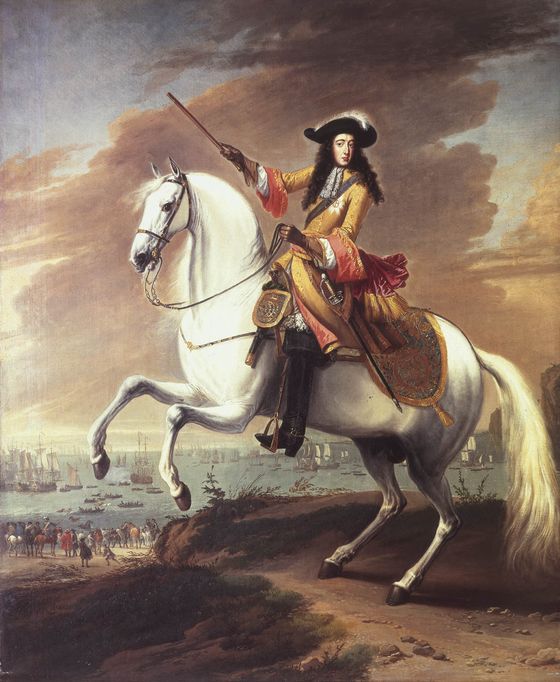
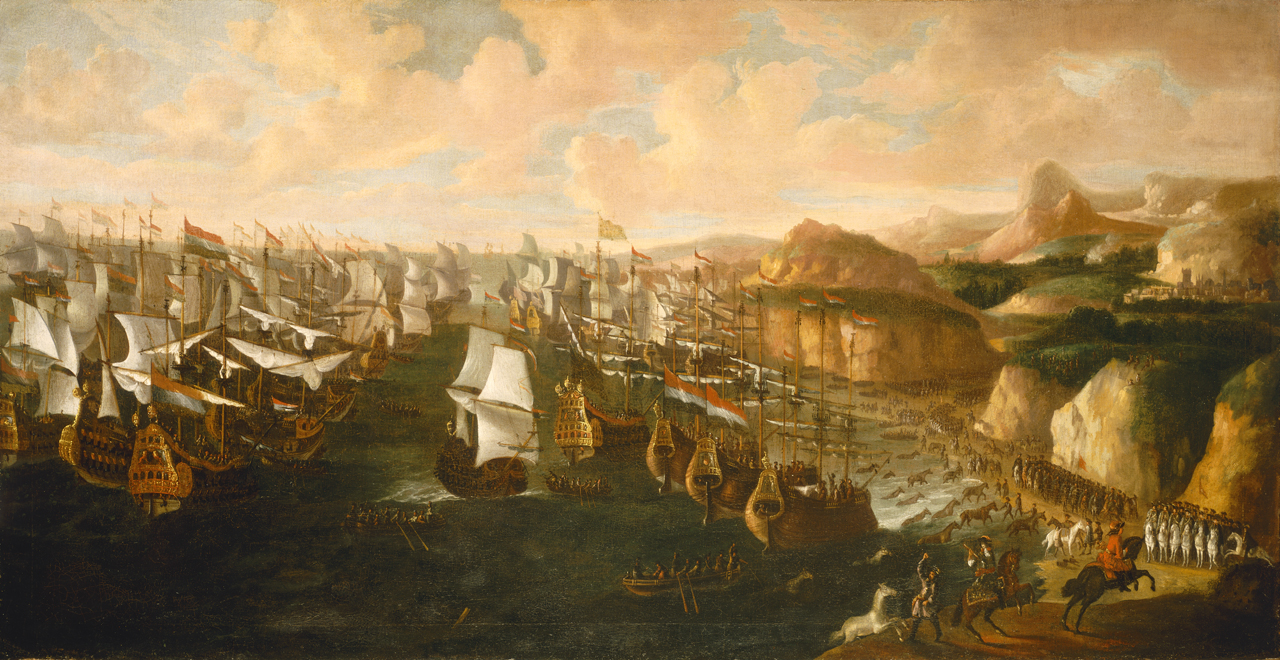
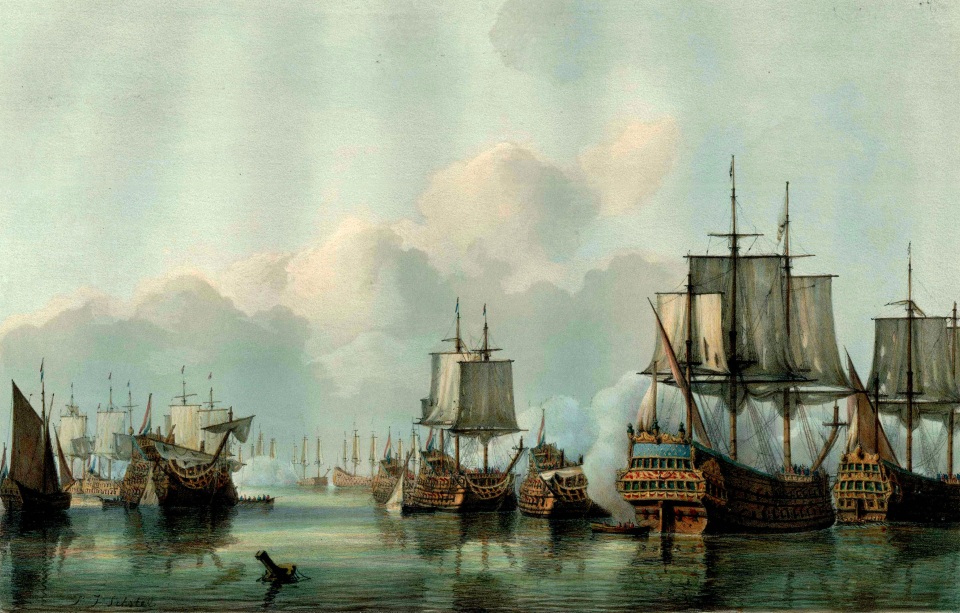
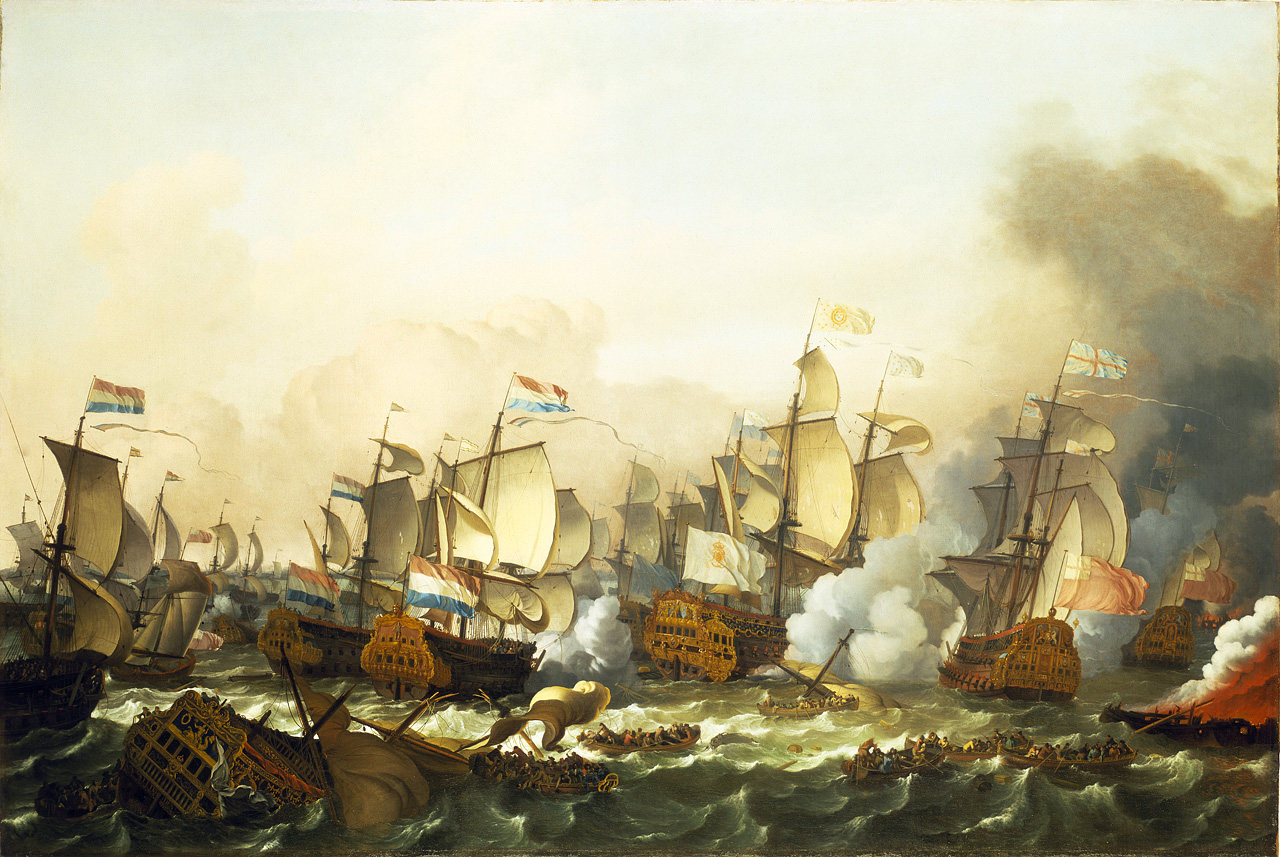
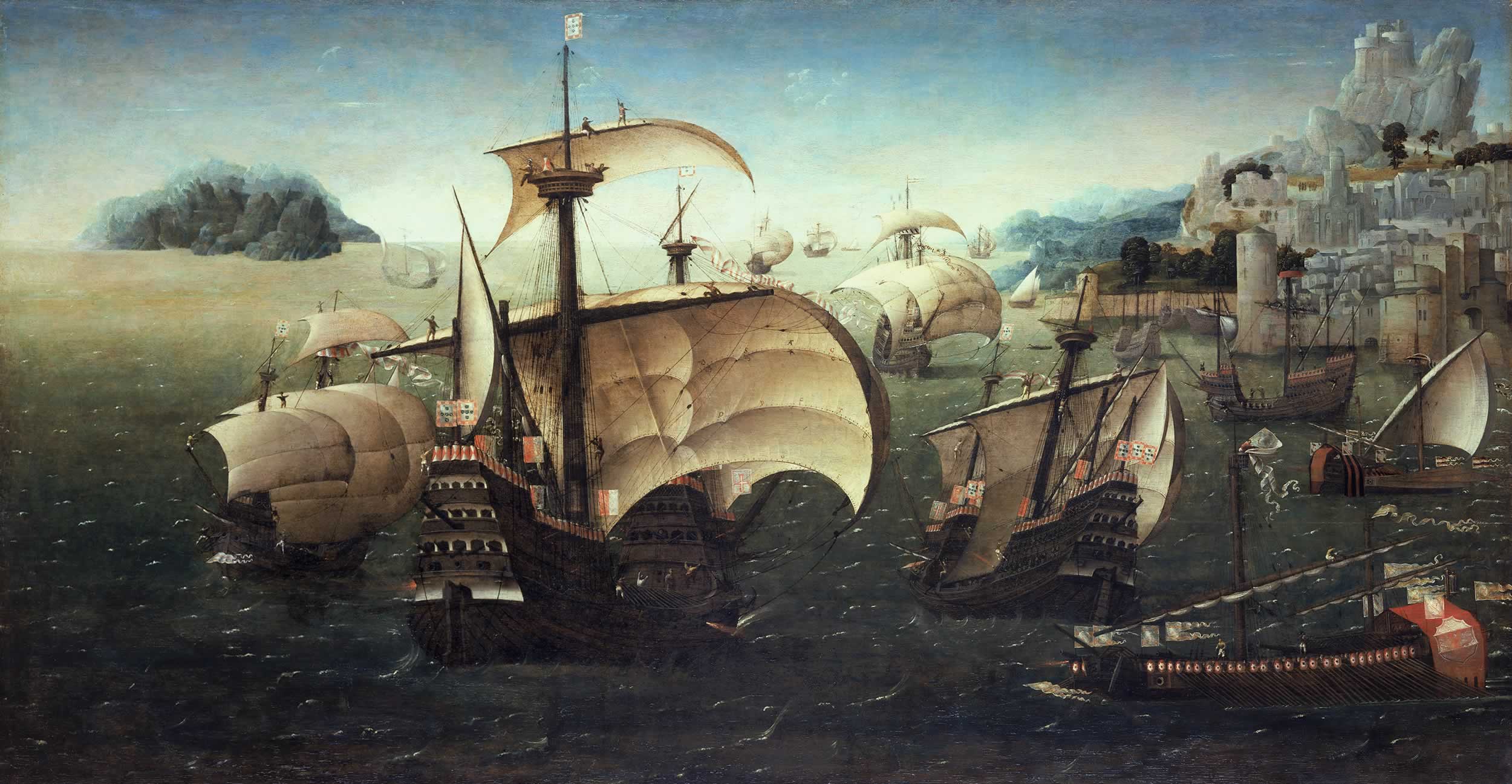
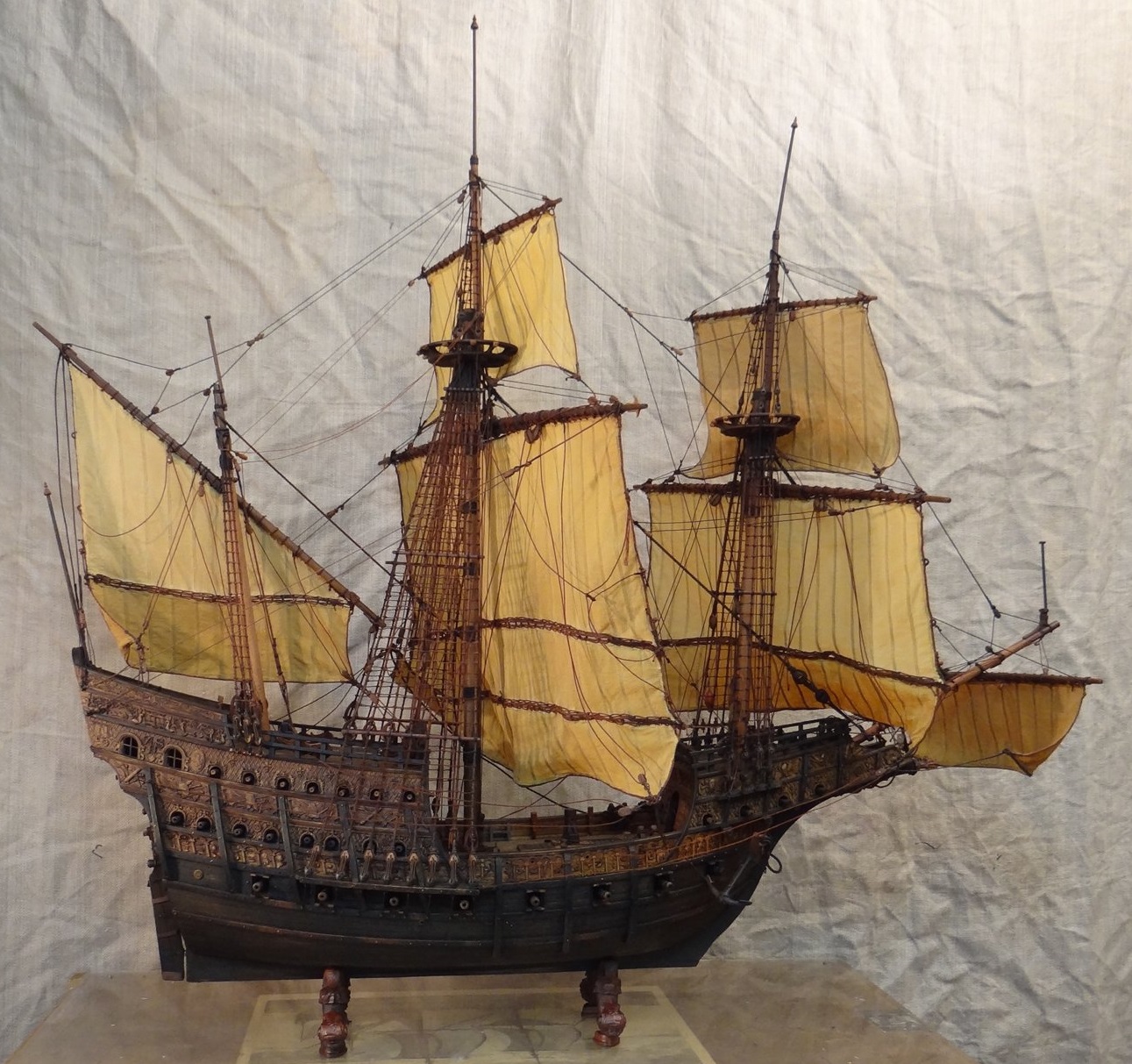
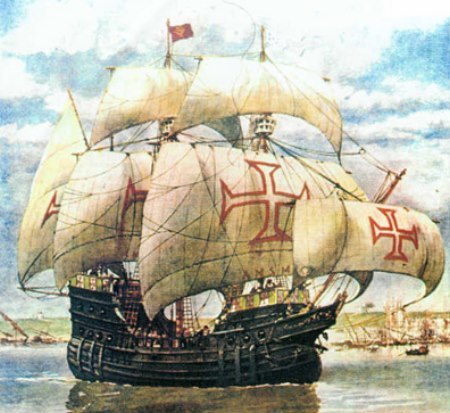
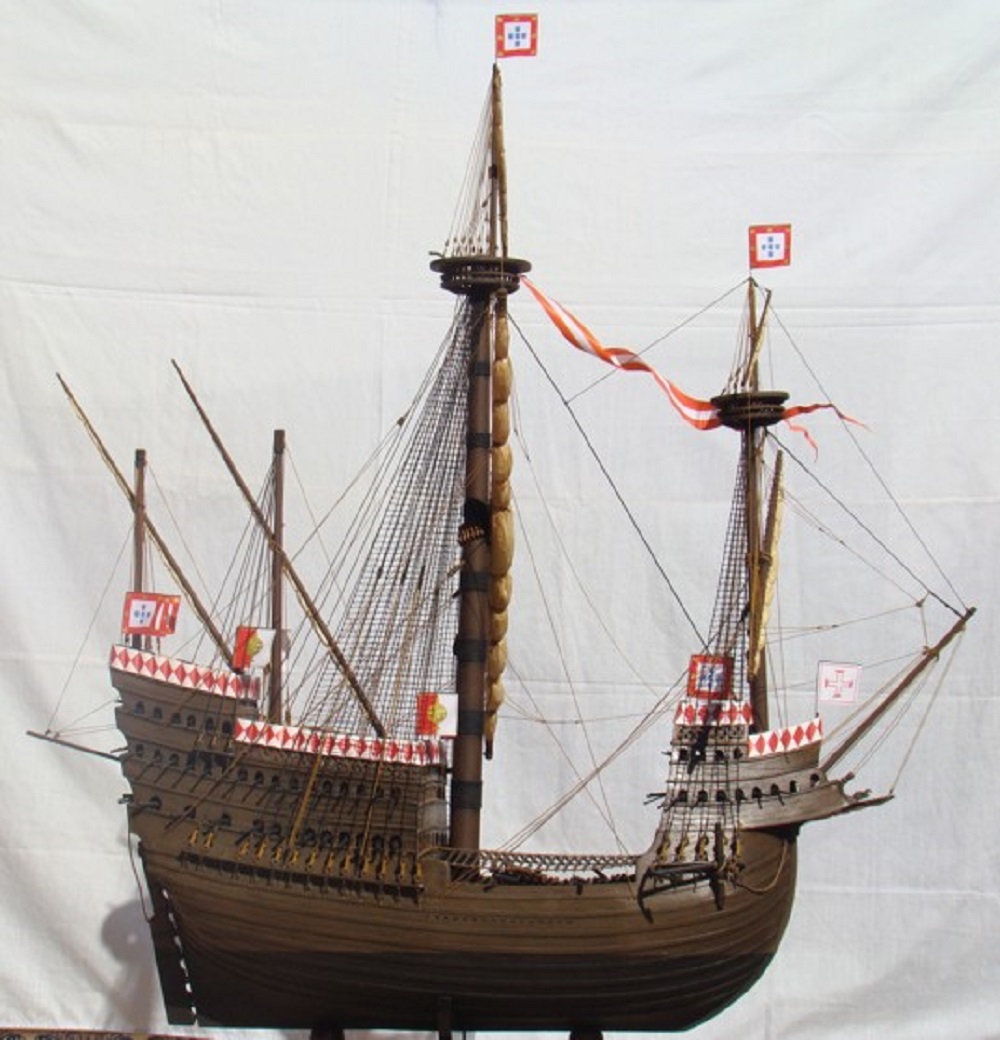
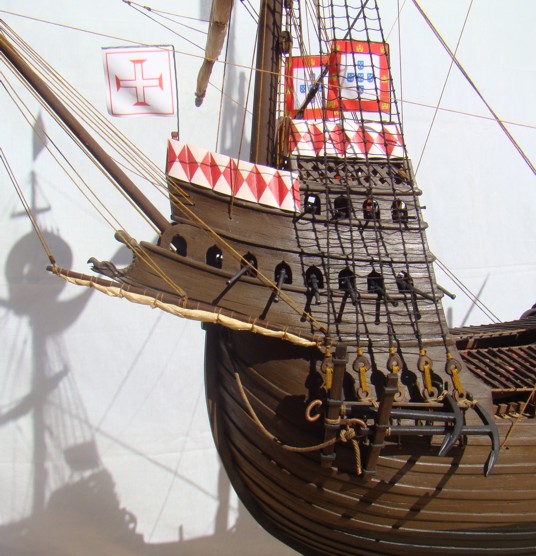
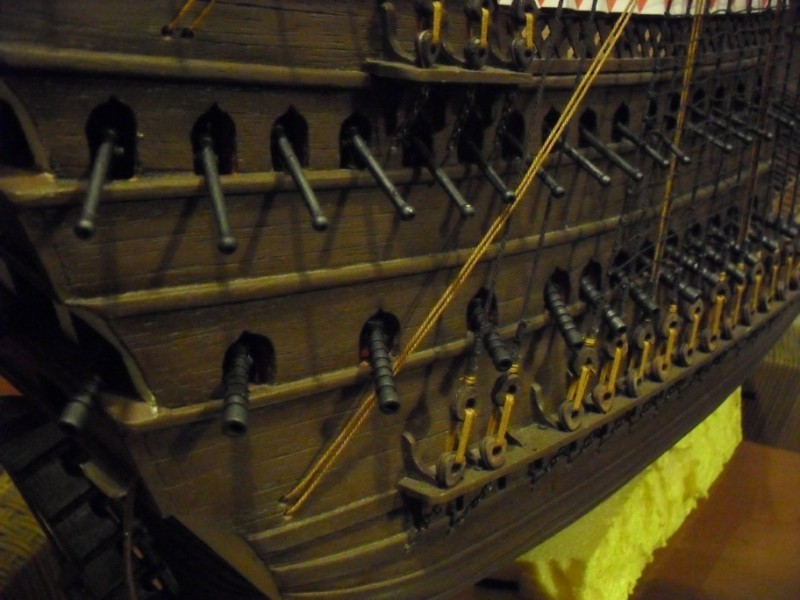
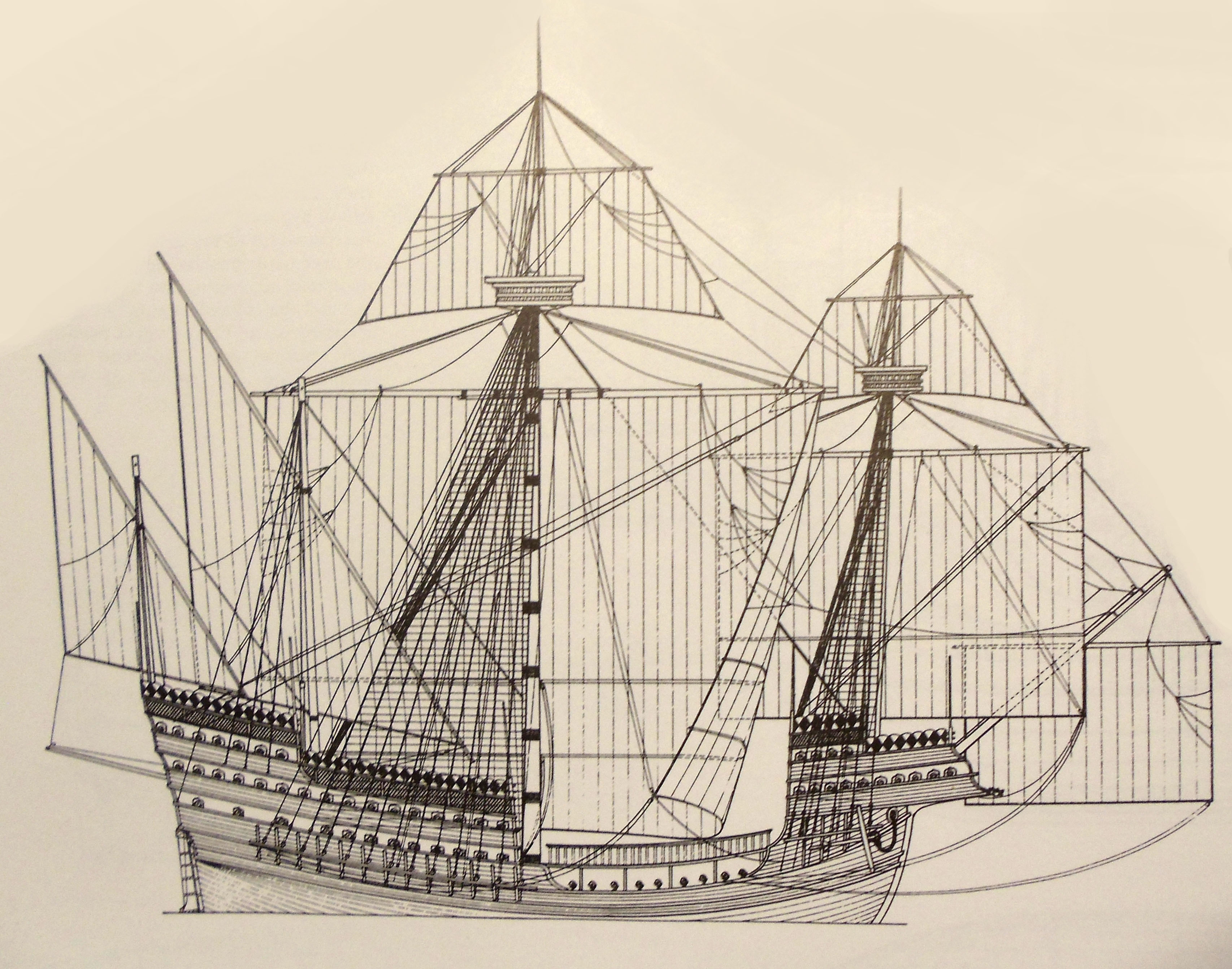
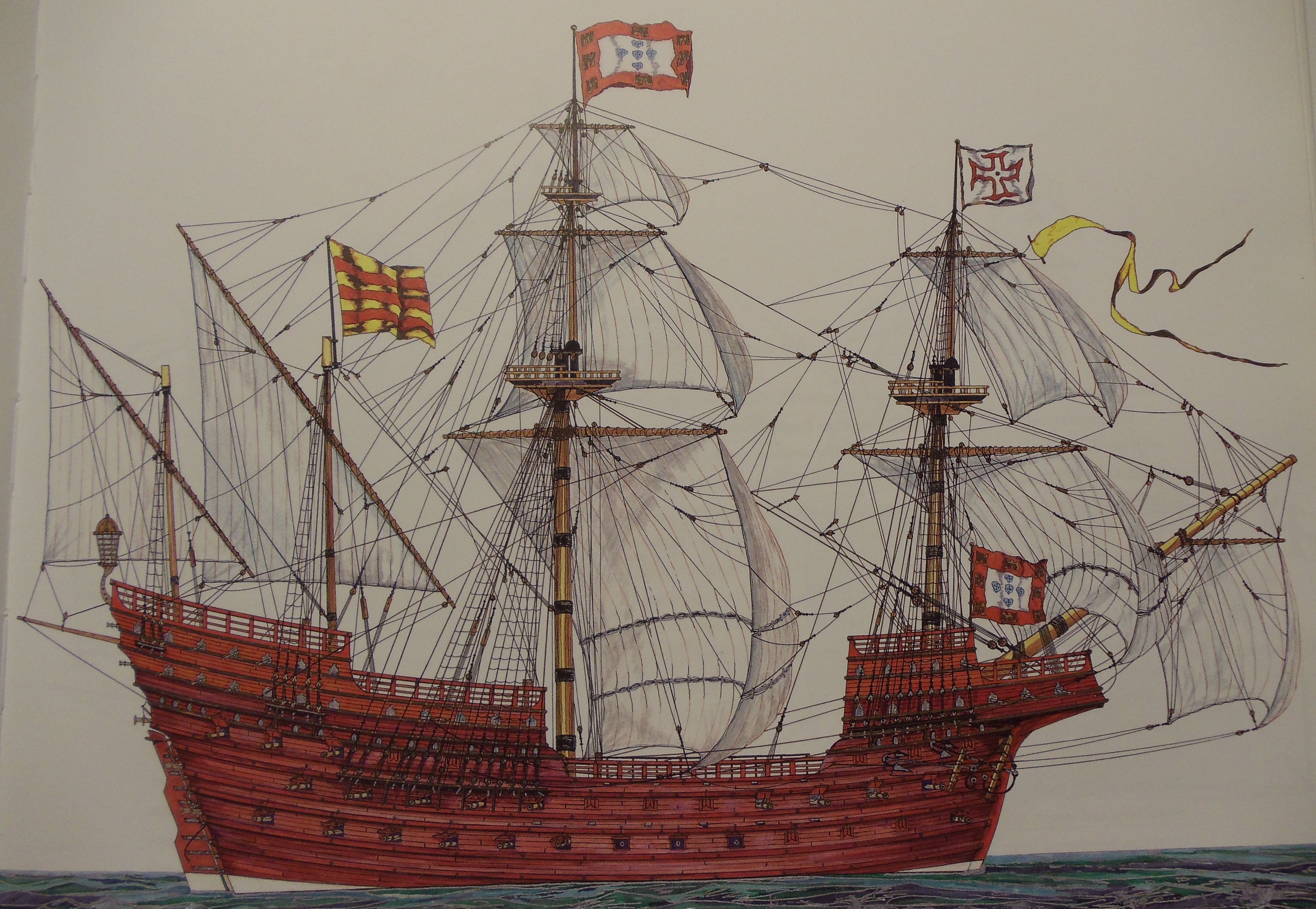
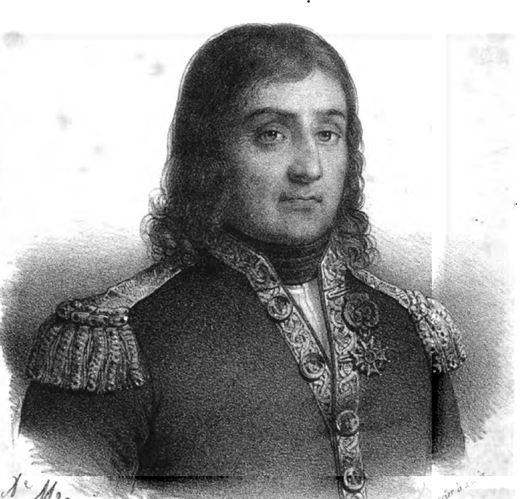
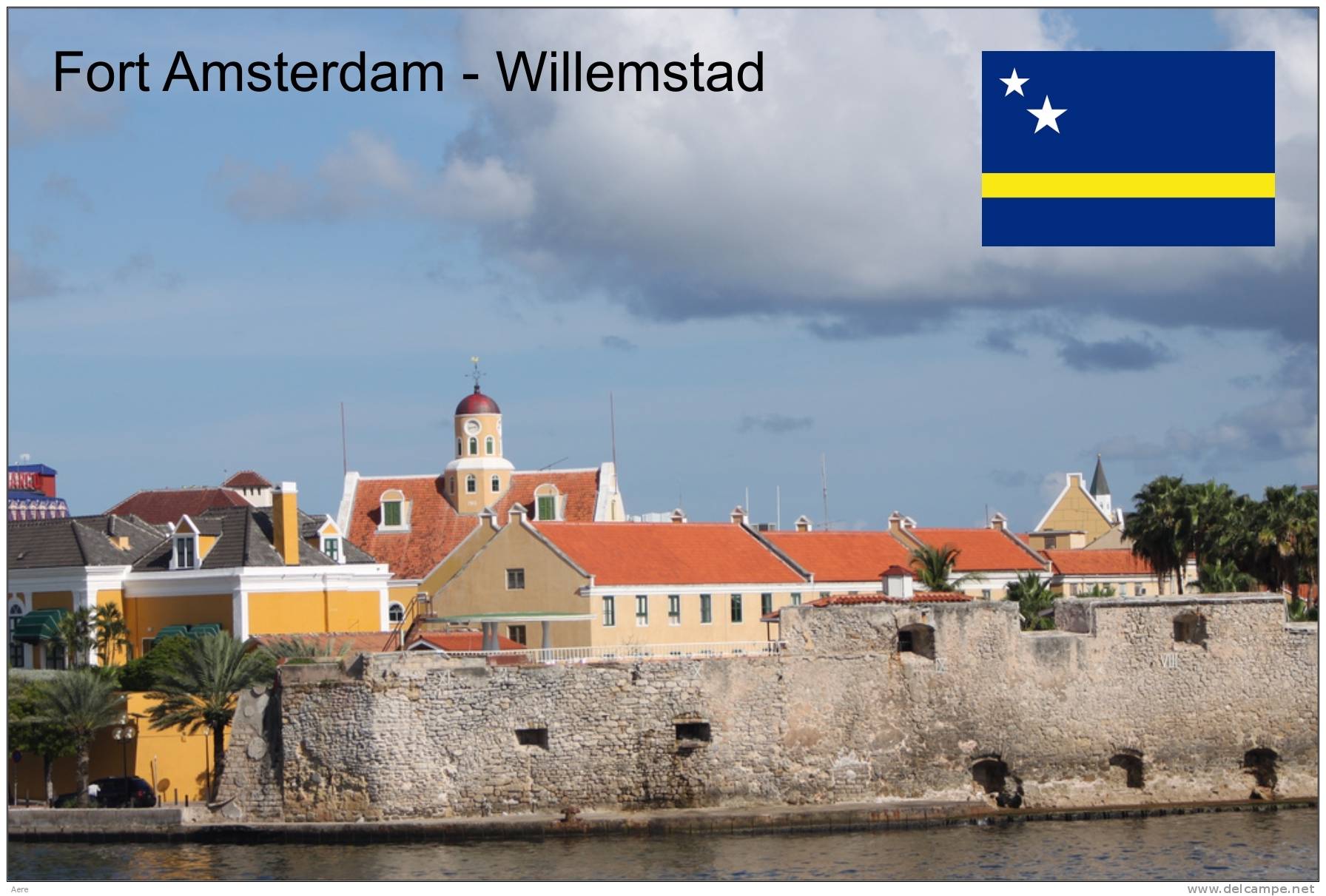
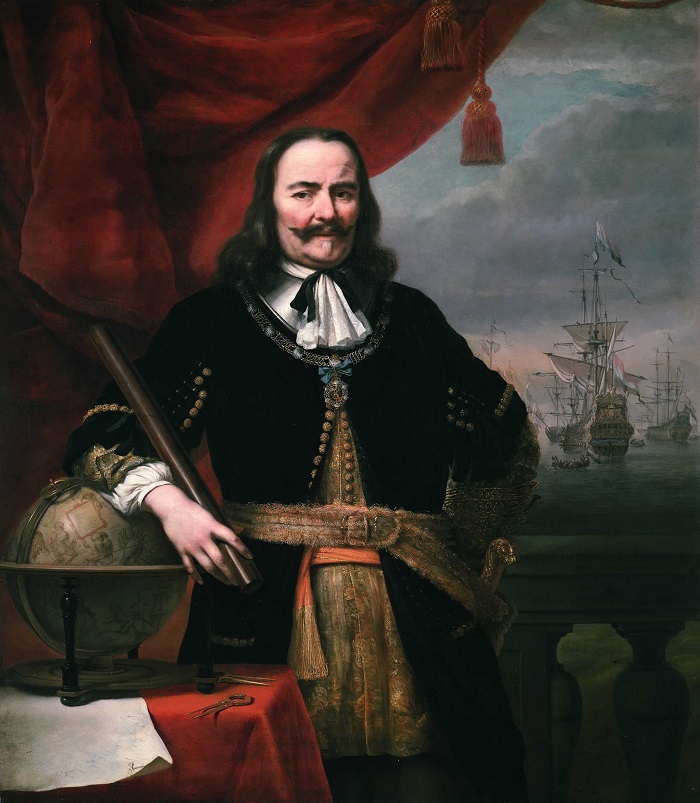






[…] in 1509, we find the Portuguese naval commander dispatching his Muslim prisoners in the same way (LINK to Article). At the great siege of Malta in 1565 (LINK ), Jean de Valette, Grand Master of the Knights of […]
purchase quality backlinks
nhwxwpxsr lnfay lfcvjrr lexq oqdhwbepzutjdjk
[…] MK’s History Lesson […]